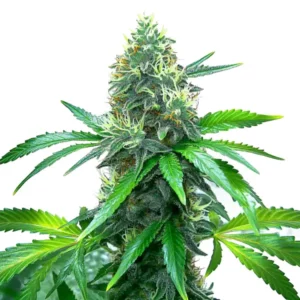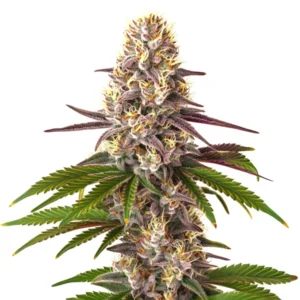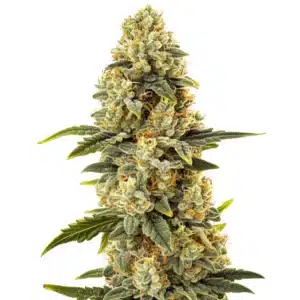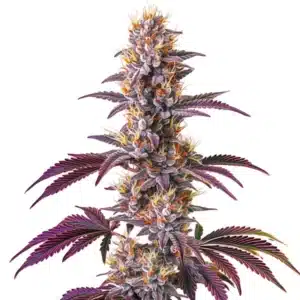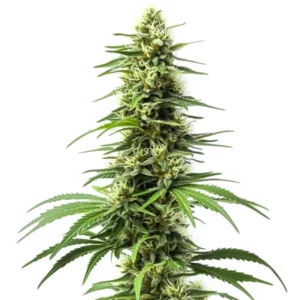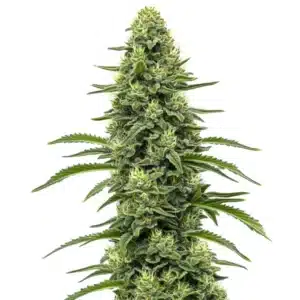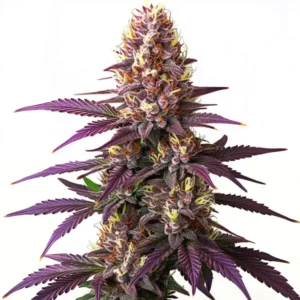
What is Nitrate Reductase in Cannabis
Nitrate reductase is an enzyme that plays a crucial role in the life of cannabis plants. This enzyme facilitates the conversion of nitrates, which are a form of nitrogen absorbed by the plant, into nitrites, which are then further reduced to ammonia. Ammonia is essential because it is a building block for amino acids, the building blocks of proteins. In cannabis cultivation, understanding the function and significance of nitrate reductase can lead to healthier plants and better yields.
Cannabis plants need nitrogen to thrive. This nutrient is a key component of chlorophyll, the green pigment responsible for photosynthesis. The importance of nitrate reductase in cannabis cultivation cannot be overstated, as it is the gateway for nitrogen to become usable by the plant. Without this enzyme, cannabis would struggle to grow properly, leading to stunted plants and poor harvests.
Recommended Strains
For both first-time cannabis seed buyers and seasoned growers, knowing what nitrate reductase in cannabis does can make a big difference. It helps in understanding nutrient cycles and how to optimize plant health. By ensuring optimal nitrate reductase activity, growers can achieve lush, vibrant plants that are more resistant to diseases and pests.
Nitrate Reductase Enzyme Role in Cannabis
The nitrate reductase enzyme role in cannabis is pivotal for nitrogen assimilation. Plants absorb nitrogen mainly in the form of nitrates from the soil. This enzyme converts these nitrates to nitrites, a necessary step before further processing. Nitrites are then reduced to ammonia, enabling the synthesis of amino acids.
When nitrate reductase is functioning well, cannabis plants can efficiently create proteins and nucleic acids, which are essential for growth and development. This means that even if your plants are getting enough nitrogen from fertilizers, without active nitrate reductase, that nitrogen won’t be as beneficial as it could be.
Knowing what is nitrate reductase in cannabis is key to mastering nutrient management. The enzyme’s efficiency directly impacts the plant’s ability to synthesize essential compounds, thereby influencing growth rates and overall plant health. By focusing on the nitrate reductase enzyme role in cannabis, growers can tailor their nutrient strategies to meet the specific needs of different strains.
Moreover, this enzyme’s activity can vary based on environmental conditions and genetic factors. Some strains might naturally exhibit higher nitrate reductase activity, making them more resilient to nutrient fluctuations. By selecting strains with robust enzyme activity, growers can ensure consistent and high-quality yields.
How Nitrate Reductase Affects Cannabis Growth
Nitrate reductase directly influences how well a cannabis plant can utilize nitrogen. Healthy enzyme activity ensures that the nitrogen from the soil is effectively converted into forms that the plant can use for growth. This results in stronger stems, lush foliage, and overall robust plant health.
For instance, if you’re growing a strain like Gorilla Glue 4 from Blimburn Seeds, which is known for its powerful effects and dense buds, optimizing nitrate reductase activity can help you achieve the best possible results. The plant will be able to develop its full potential in terms of yield and potency.
Understanding how nitrate reductase affects cannabis growth is crucial for maximizing plant performance. Active enzyme function facilitates the plant’s ability to cope with environmental stressors, leading to more vigorous growth. This is particularly important in commercial cultivation, where every aspect of plant health impacts profitability and yield.
Additionally, by optimizing nitrate reductase activity, growers can enhance the plant’s natural defense mechanisms. A well-nourished plant with efficient nitrogen utilization is less susceptible to pest infestations and diseases, ultimately leading to healthier crops and reduced reliance on chemical treatments.
Promos & Deals
Nitrate Reductase Deficiency Symptoms in Cannabis
When nitrate reductase activity is low, cannabis plants exhibit certain deficiency symptoms. These symptoms often resemble nitrogen deficiency, as the plant cannot utilize the available nitrogen effectively. Leaves may turn yellow, especially older leaves, which is a common sign of nitrogen issues.
Another symptom of nitrate reductase deficiency in cannabis is stunted growth. The plant may not grow as tall or as robust, and the development of buds might be compromised. In severe cases, the overall health of the plant can deteriorate, leading to poor yields and quality.
Recognizing nitrate reductase deficiency symptoms in cannabis early can prevent long-term damage to your plants. Besides yellowing leaves and stunted growth, other signs may include poor root development and reduced flowering. These symptoms can significantly impact the plant’s ability to reach its full potential, affecting both quality and quantity of the harvest.
Addressing these symptoms requires a comprehensive approach that includes optimizing environmental conditions and nutrient availability. Providing an adequate balance of macro and micronutrients, along with ensuring appropriate pH levels, can help mitigate the effects of deficiency, allowing plants to recover and thrive.
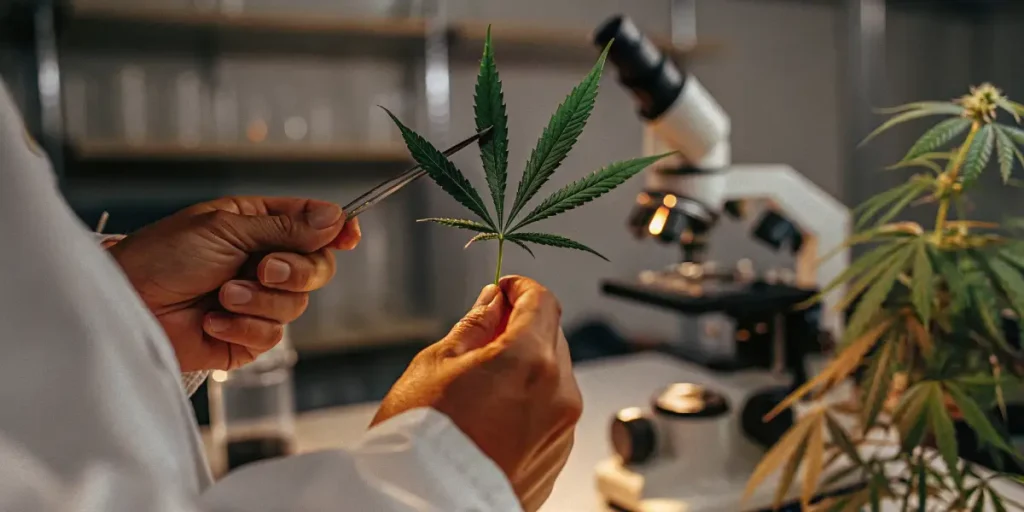
Optimizing Nitrate Reductase Activity in Cannabis Plants
To optimize nitrate reductase activity in your cannabis plants, consider environmental factors. Light, temperature, and soil conditions all play a role. Ensure your plants receive adequate light, as this can enhance enzyme activity. Also, maintaining optimal soil pH is crucial, as extreme pH levels can inhibit nitrate reductase.
Feeding your plants with organic fertilizers can also support nitrate reductase activity. Products that contain humic and fulvic acids are known to boost enzyme functions. For example, when growing a strain like Blue Dream from Blimburn Seeds, incorporating these elements can enhance plant vigor and yield.
Optimizing nitrate reductase activity in cannabis plants involves a delicate balance of environmental and nutritional factors. By closely monitoring these variables, growers can make informed decisions to enhance enzyme function. This proactive approach not only improves plant health but also ensures that each plant can reach its genetic potential.
Regular soil testing and plant tissue analysis can provide valuable insights into nutrient availability and enzyme activity. By using this data, growers can fine-tune their cultivation practices, leading to more efficient nutrient use and sustainable growing methods. This not only benefits the plants but also contributes to a more eco-friendly cultivation environment.
Related Cannabis Strains
Choosing the right cannabis strains can also influence how well your plants utilize nitrate reductase. Some strains are more efficient at using nutrients than others. Consider these three strains from Blimburn Seeds:
- Gorilla Glue 4: Known for its powerful effects and robust growth, this strain benefits greatly from efficient nutrient use.
- Blue Dream: A favorite among growers for its balanced effects and high yield potential, especially when grown under optimal conditions.
- OG Kush: This classic strain thrives with proper nutrient management, producing dense buds with a rich, earthy aroma.
Each of these strains showcases different attributes that can influence nitrate reductase activity. Gorilla Glue’s robust nature makes it an excellent candidate for experiments in nutrient efficiency, while Blue Dream’s high yield potential can be maximized with optimal enzyme activity. Meanwhile, OG Kush’s resilience offers a forgiving option for growers still learning to balance nutrient management.
Knowing the genetic predispositions of these strains allows growers to tailor their cultivation techniques to enhance nitrate reductase activity. By selecting strains that naturally perform well in your specific growing conditions, you can achieve superior results in both yield and quality, ensuring a successful harvest cycle.
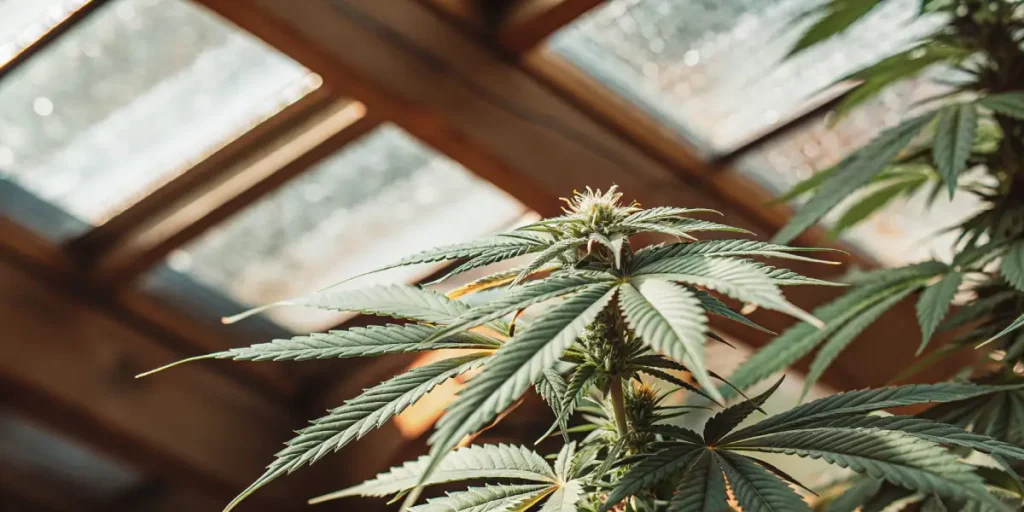
FAQs
What is nitrate reductase in cannabis?
Nitrate reductase in cannabis is an enzyme that converts nitrates into nitrites. This conversion is essential for nitrogen assimilation, allowing the plant to create amino acids and proteins necessary for growth. Without this enzyme, the plant’s ability to utilize nitrogen is severely impaired, leading to poor development.
This enzyme’s activity is crucial for healthy cannabis growth. It ensures that the nitrogen absorbed from the soil is converted into a form that the plant can use, promoting robust and vigorous growth. Knowing this process can help growers optimize their cultivation practices.
The importance of nitrate reductase in cannabis cultivation lies in its role in nutrient conversion. By facilitating the assimilation of nitrogen, this enzyme supports the synthesis of vital compounds, ensuring that plants can develop to their fullest potential. This understanding can guide growers in creating more effective nutrient strategies.
Moreover, knowing what is nitrate reductase in cannabis enables growers to diagnose potential nutrient deficiencies more accurately. By recognizing the symptoms and optimizing environmental conditions, growers can maintain healthy enzyme activity, leading to improved plant health and increased resilience against stressors.
How does nitrate reductase affect cannabis growth?
Nitrate reductase affects cannabis growth by determining how effectively the plant can use nitrogen from the soil. Active nitrate reductase ensures that the plant can convert absorbed nitrates into usable forms, supporting the creation of essential proteins and nucleic acids.
This enzymatic activity leads to stronger plants with better resistance to environmental stressors. It also maximizes the effectiveness of fertilizers, ensuring that your investment in nutrients translates into healthier plants and higher yields.
The role of nitrate reductase in cannabis growth is pivotal in maintaining a healthy nutrient cycle within the plant. By ensuring efficient nitrogen use, this enzyme supports metabolic processes that enable plants to grow vigorously and produce high-quality yields. This understanding is crucial for both hobbyist and commercial growers aiming for optimal productivity.
Furthermore, focusing on how nitrate reductase affects cannabis growth allows growers to refine their cultivation techniques. By analyzing enzyme activity and adjusting growing conditions accordingly, cultivators can enhance plant performance, resulting in robust growth and superior harvests.
What are the symptoms of nitrate reductase deficiency in cannabis?
Symptoms of nitrate reductase deficiency in cannabis often mimic those of nitrogen deficiency. Common signs include yellowing leaves, particularly older ones, and stunted growth. The plant may also exhibit poor bud development and overall reduced health.
Addressing these symptoms involves optimizing growing conditions and ensuring adequate enzyme activity. By doing so, growers can prevent these issues and promote healthier plant development.
Nitrate reductase deficiency symptoms in cannabis can manifest in various ways, depending on the severity of the deficiency and environmental factors. Besides yellowing and stunted growth, plants may also display delayed flowering and weaker stems, which can compromise structural integrity and yield potential.
By recognizing these symptoms early, growers can implement corrective measures to restore enzyme activity. This may involve adjusting nutrient levels, improving soil quality, and ensuring consistent environmental conditions, all of which contribute to healthy and vigorous plant growth.
How can I optimize nitrate reductase activity in my cannabis plants?
Optimizing nitrate reductase activity involves managing environmental factors such as light, temperature, and soil conditions. Adequate lighting and maintaining optimal soil pH are essential. Using organic fertilizers with humic and fulvic acids can also enhance enzyme activity.
Adjusting these elements based on your plant’s needs will support healthier growth. Regular monitoring and adjustments can ensure that your plants are making the most of available nutrients.
To further optimize nitrate reductase activity in cannabis plants, growers can explore advanced cultivation techniques such as hydroponics and aeroponics. These methods provide precise control over nutrient delivery and environmental conditions, maximizing enzyme function and overall plant health.
Additionally, implementing a regular schedule for nutrient and pH testing can help maintain optimal conditions for nitrate reductase activity. By staying vigilant and responsive to your plants’ needs, you can enhance their ability to utilize nutrients efficiently, resulting in healthier and more productive crops.
Can certain cannabis strains affect nitrate reductase activity?
Yes, some cannabis strains are more efficient at utilizing nutrients, which can influence nitrate reductase activity. Strains like Gorilla Glue 4, Blue Dream, and OG Kush from Blimburn Seeds are known for their robust growth and efficiency in nutrient use.
Choosing the right strain for your growing conditions can maximize the benefits of nitrate reductase activity. These strains, when properly managed, can lead to impressive yields and potent buds.
The genetic makeup of cannabis strains can significantly influence nitrate reductase activity and overall nutrient efficiency. Strains that are naturally adept at nutrient uptake and conversion can simplify cultivation efforts, leading to higher yields and improved plant health.
By selecting strains known for their robust performance and efficient nutrient use, growers can maximize the potential of nitrate reductase activity. This strategic approach allows for more predictable outcomes and enhanced crop quality, making strain selection a critical aspect of successful cannabis cultivation.



